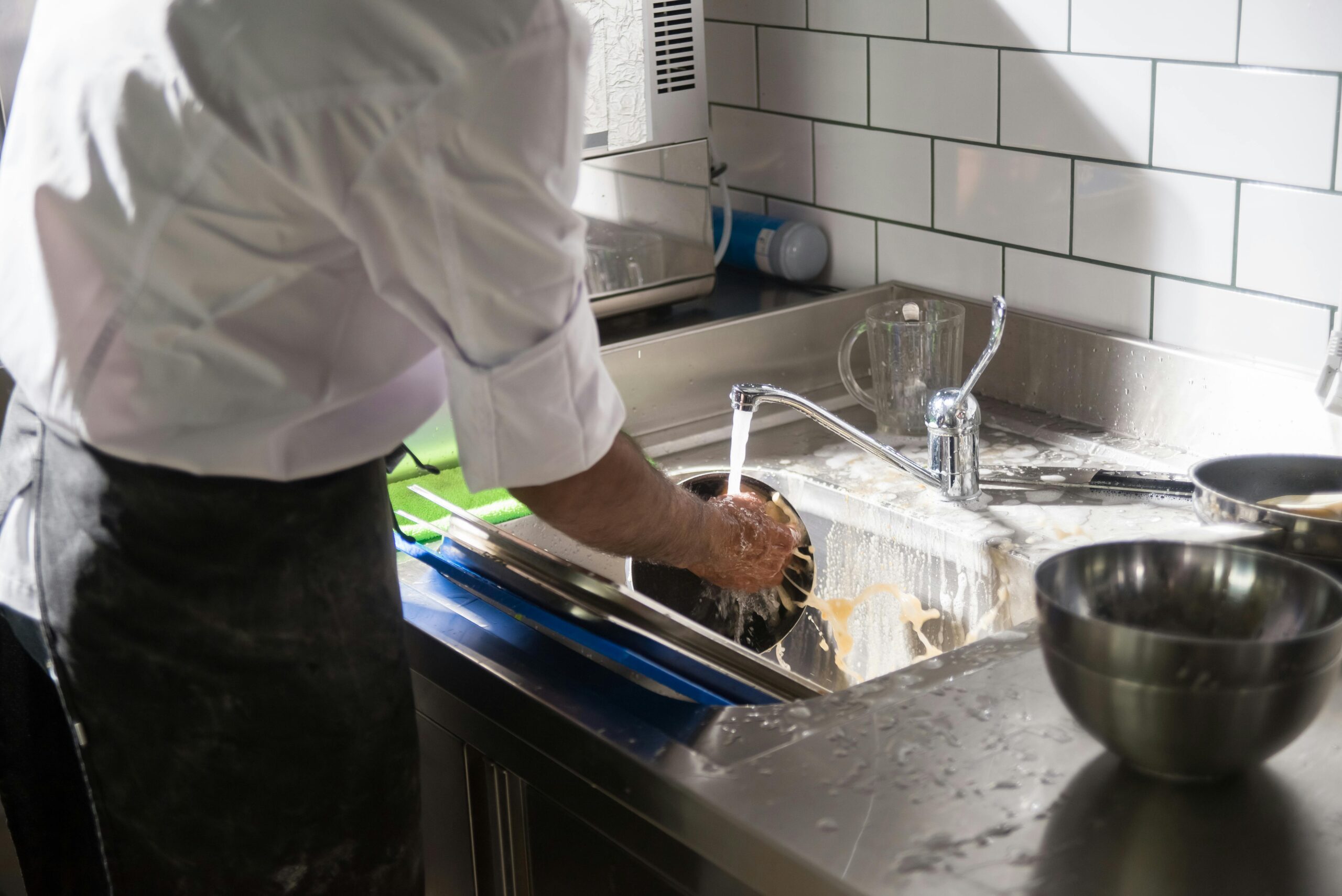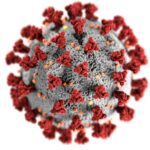New Study Shows a Single Scratch on a Nonstick Pan Releases 9000 Toxic Microplastic Particles, While a Broken Coating Releases Over 2 Million

For decades, nonstick cookware has been praised for its convenience—effortless cooking, easy cleanup, and a sleek, modern design. But beneath the smooth surface of these kitchen staples lies a hidden risk that few consider. New research has uncovered an unsettling reality: with just a single scratch, something invisible is released into food—something that was never meant to be consumed.
The findings challenge long-held assumptions about what is truly safe in the kitchen. As scientists continue to study the impact of this exposure, one thing is becoming clear: the tools used to prepare food may be just as important as the ingredients themselves. The risks go beyond what the eye can see, making this an issue that demands closer attention.
What exactly is being released from nonstick cookware, and what does it mean for long-term health? The answers lie in understanding how these surfaces break down and what happens when they do.
How Nonstick Cookware Breaks Down—And Why It Matters

Nonstick cookware was designed to make cooking easier—food slides off effortlessly, and cleaning takes only seconds. But this convenience comes at a cost that most people never see. Beneath the smooth, glossy surface of these pans lies a fragile coating that wears down over time. Every scrape of a spatula, every high-heat exposure, every trip through the dishwasher weakens the protective layer, allowing microscopic fragments to break free.
At the heart of this issue is polytetrafluoroethylene, or PTFE, commonly known as Teflon. This synthetic coating gives nonstick cookware its signature slipperiness, but it is not indestructible. A recent study found that a single scratch on a Teflon-coated pan can release 9,000 microplastic particles into food. If the coating is significantly damaged, that number rises dramatically—to more than 2 million particles per cooking session.
These particles are too small to be seen, but their presence is not harmless. Unlike the plastic waste that can be discarded, these microscopic fragments do not simply pass through the body unnoticed. As nonstick surfaces degrade, they contribute to a form of contamination that is nearly impossible to avoid—one that enters not just food, but potentially the bloodstream, the lungs, and even vital organs.
The convenience of nonstick cookware has long overshadowed its hidden risks. But if something as small as a scratch can introduce thousands of plastic particles into a meal, it raises an urgent question: how safe is the cookware that millions rely on every day?
What Happens When Microplastics Build Up in the Body
The body was never meant to process plastic, yet studies show that microplastics are finding their way into places they do not belong. Researchers have detected these tiny fragments in human blood, lungs, and even the placentas of unborn babies. Unlike larger plastic waste that can be seen and removed, microplastics operate on an almost invisible level, making their impact far more insidious.
Once ingested, these particles do not simply pass through the digestive system. Instead, they can enter the bloodstream, embedding themselves in vital organs such as the liver and kidneys. Some studies suggest they may even cross into the brain. The long-term effects are still being studied, but early research points to troubling possibilities. Scientists believe microplastic exposure may disrupt hormone function, weaken the immune system, and contribute to chronic inflammation. These factors are linked to serious health conditions, including infertility, metabolic disorders, and an increased risk of certain cancers.
The problem extends beyond individual health. Microplastics are now present in nearly every aspect of daily life, from the food supply to drinking water and even the air. Their presence in cookware is just one of many ways these particles are making their way into the human body. With research still uncovering the full extent of the damage, one thing is clear—this is not an issue to ignore.
“Forever Chemicals” in Nonstick Pans: The Hidden Danger Beyond Microplastics
The dangers of nonstick cookware do not stop at microplastics. Alongside these tiny particles, another group of harmful substances is quietly making its way into food—per- and polyfluoroalkyl substances, commonly known as PFAS. Often referred to as “forever chemicals,” PFAS are designed to be resistant to heat, water, and grease, making them highly durable but nearly impossible to break down. Once released, they persist in the environment and accumulate in the human body, where they can remain for years.
Research has linked PFAS exposure to a range of serious health conditions. Studies suggest that these chemicals may contribute to increased cholesterol levels, weakened immune responses, and a higher risk of kidney, testicular, and thyroid cancers. PFAS are also known endocrine disruptors, meaning they interfere with hormone function, potentially affecting metabolism, reproductive health, and thyroid regulation. Because they take so long to degrade, even low levels of exposure can build up over time, leading to long-term health risks.
Although certain toxic PFAS, such as perfluorooctanoic acid (PFOA), have been phased out of cookware manufacturing in some countries, newer versions are still widely used. Their long-term effects remain under investigation, but early studies indicate they may pose similar risks. As a result, even “PFOA-free” nonstick pans may still contain potentially harmful chemicals. Without stricter regulations, the safest approach is to limit exposure whenever possible.
It’s Not Just Your Pan—Microplastics Are in Everything We Eat, Drink, and Breathe

The risks of nonstick cookware go far beyond the kitchen. Once microplastics and PFAS enter the environment, they do not disappear. They contaminate water, soil, and air, making exposure unavoidable.
Discarded nonstick pans release microplastics into landfills and waterways, where they enter the food chain. Marine life and livestock consume these particles, which then end up in seafood, meat, and even produce. Studies have also found PFAS in drinking water, where they persist for years since conventional filtration systems cannot remove them effectively.
Airborne microplastics pose another concern. Small enough to float, these particles settle into household dust, increasing the risk of inhalation. Even those who avoid nonstick cookware are still exposed through daily life.
This is no longer just a personal health issue—it is a global contamination crisis. Reducing exposure requires more than just switching cookware. It demands better consumer awareness, corporate accountability, and stronger regulations to limit these pollutants at the source.
Choosing Safer Cookware for a Healthier Kitchen

Reducing exposure to microplastics and harmful chemicals in cookware can be simple with a few mindful changes:
- Switch to safer cookware – Cast iron, stainless steel, ceramic-coated, and carbon steel pans are durable alternatives that do not release toxic particles.
- Handle nonstick pans carefully – Avoid using metal utensils and abrasive scrubbers that can scratch the coating and release microplastics.
- Limit high heat on nonstick surfaces – Overheating nonstick pans can accelerate the breakdown of coatings and release harmful fumes.
- Replace damaged cookware – Scratched or peeling nonstick pans should be replaced immediately to prevent contamination.
- Be mindful of plastic exposure – Filtering tap water, using glass or stainless steel containers, and reducing plastic packaging can help minimize ingestion of microplastics.
While complete avoidance of microplastics and PFAS may not be possible, small adjustments in cookware choices and daily habits can significantly reduce long-term health risks.
Rethinking Convenience Before It’s Too Late
For decades, nonstick cookware has been marketed as a modern convenience—a way to cook effortlessly and clean up with ease. But as research continues to reveal the risks, it raises an important question: at what point does convenience come at too high a cost?
This issue is part of a larger pattern. From plastic packaging to disposable utensils, modern life prioritizes ease over long-term health and sustainability. Microplastics and PFAS are not just cookware problems—they are symptoms of a system that values short-term convenience over long-term safety. The widespread presence of these contaminants in food, water, and air shows how deeply ingrained they have become in daily life.
But awareness is the first step toward change. While individuals can make choices to reduce exposure, real progress requires holding manufacturers and policymakers accountable. Demanding safer alternatives, stricter regulations, and more transparency in product labeling can push industries to prioritize health and sustainability. Convenience should not come at the expense of well-being, and with informed decisions, change is possible.
Featured Image Source: Shutterstock
Sources:
- Luo, Y., Gibson, C. T., Chuah, C., Tang, Y., Naidu, R., & Fang, C. (2022). Raman imaging for the identification of Teflon microplastics and nanoplastics released from non-stick cookware. The Science of the Total Environment, 851, 158293. https://doi.org/10.1016/j.scitotenv.2022.158293
- Cole, M., Gomiero, A., Jaén-Gil, A., Haave, M., & Lusher, A. (2024). Microplastic and PTFE contamination of food from cookware. The Science of the Total Environment, 929, 172577. https://doi.org/10.1016/j.scitotenv.2024.172577
Loading...
Related Content
 When Science Shows Our Bones Can Rise Again
When Science Shows Our Bones Can Rise AgainBy Prince Ea





